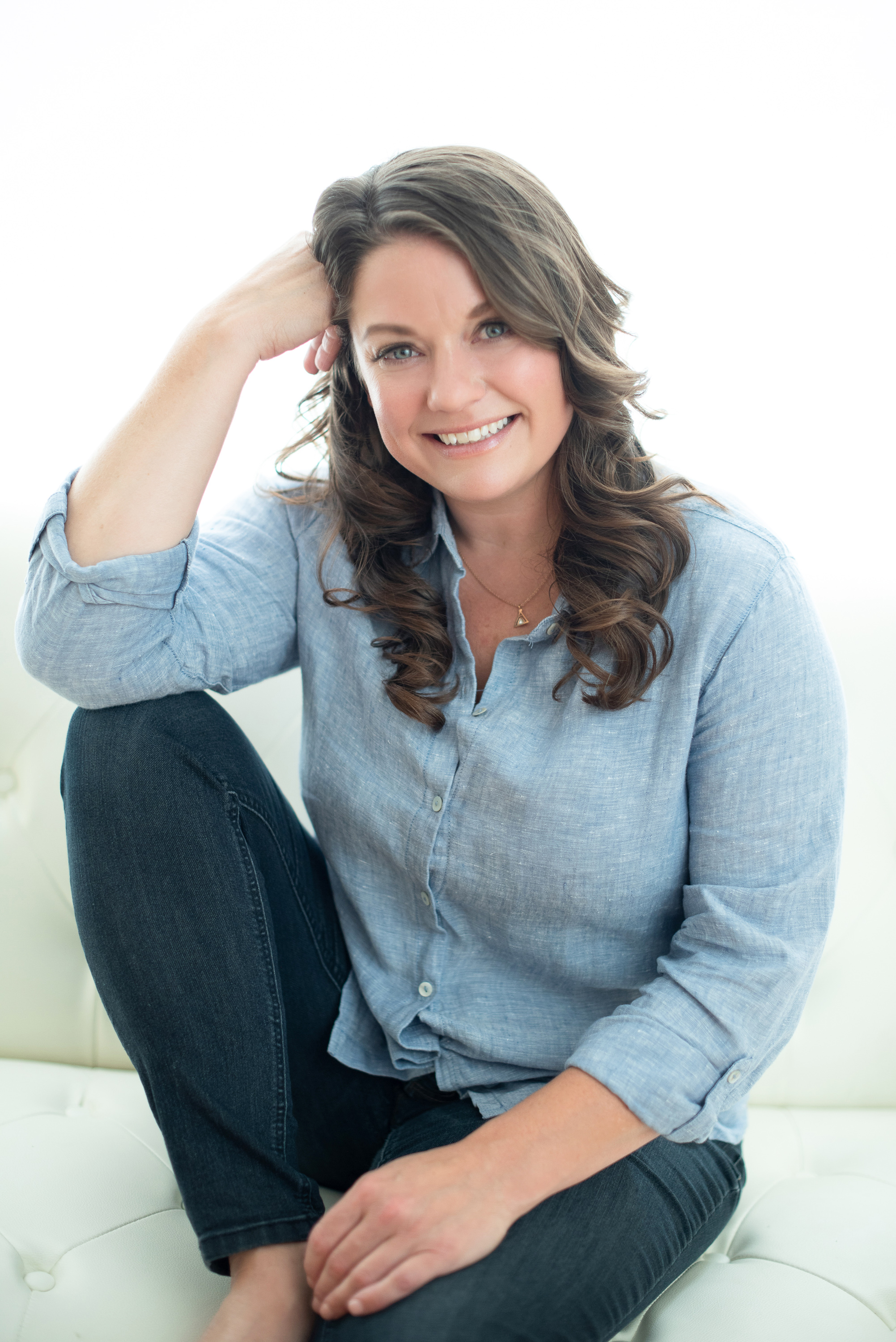
Why Budgets Don’t Work (and What to Try Instead)
If you’ve ever tried to stick to a budget only to end up frustrated a few weeks later, you’re not alone.
Studies show fewer than three in ten Americans feel confident they’re actually following the budget they set, and that’s not because people don’t care or can’t do math.
It’s because most budgets are built for perfect months, not real life.
They don’t account for fluctuating paychecks, rising costs, or the human side of money; the habits, emotions, and decisions that make us who we are. When your plan doesn’t match how life (or your brain) actually works, it’s easy to feel like you’re failing.
But what if the problem isn’t you?
What if the problem is the system?
In this post, we’ll unpack why traditional budgets often break down, how human behavior plays a role, and what to try instead: a flexible, values-based system that helps you see your money clearly and plan for real life with confidence.
Table of Contents
The Problem: Budgets Built for Perfect Months
The Hidden Shame Behind “Failing” at Budgeting
What Most People Miss About Money Systems
The Shift: From Budgeting to Money Mapping
Real-Life Transformation: From Stress to Stability
Ready to Build a System That Fits You?
Sources
The Problem: Budgets Built for Perfect Months
I still remember the first “real” budget I built for our family.
It was color-coded, perfectly balanced, and full of good intentions.
And for about two weeks, it actually worked.
Then a surprise bill showed up. Groceries cost more than expected. A birthday party snuck in.
Before long, I was moving numbers around like puzzle pieces, trying to make everything fit again.
If you’ve ever been there, you know the feeling, that quiet frustration that whispers,
“Why can’t I just stick to this?”
What’s really happening is this: most budgets are built for perfect months.
They assume your income is steady, your spending is predictable, and nothing unexpected ever happens. But that’s not real life.
Real life has car repairs and school picture days, spontaneous dinners with friends, and paychecks that don’t always land the same week.
And when your plan doesn’t account for those things, you start to believe you’re the problem, when really, the system was never built for how life actually works.
Behaviorally, our brains are wired for short-term relief and emotional decisions. That means a spreadsheet alone can’t hold up under stress. We need something that works with our human nature, not against it.
The Hidden Shame Behind “Failing” at Budgeting
When a budget doesn’t work, most people assume they’re the problem.
We quietly decide we must be bad with money, too emotional, or not disciplined enough.
But that belief only keeps us stuck, because it points the blame inward instead of helping us see what’s actually going on.
The truth is, money touches almost every part of our lives. It’s emotional. It’s relational. It’s tied to our sense of safety, identity, and even belonging.
So when a rigid budget falls apart, it’s not just frustrating, it can feel personal.
Behavior research shows that when we feel overwhelmed or ashamed, our brains naturally shift into self-protection mode. We avoid looking. We spend for comfort. We tell ourselves we’ll “start over next month.” And that cycle keeps us in constant reaction mode instead of feeling in control.
You were never meant to manage money through shame.
You were meant to do it with clarity, grace, and systems that reflect how real life actually flows.
What Most People Miss About Money Systems
Most people think the goal is to get better at budgeting.
But what if the goal isn’t to get better, but to build something different?
Traditional budgets often aim for perfection, tracking every expense and expecting consistency.
But the goal isn’t perfect prediction; it’s building awareness and flexibility so you can plan ahead and pivot when life does.
Human behavior research shows we’re not wired for rigid systems. When something feels too restrictive, our brains push back. That’s why “perfect” budgets usually last until the first curveball hits.
Real financial peace doesn’t come from tightening up, it comes from creating a system that flexes with you.
That’s where the idea of Money Mapping comes in.
Instead of one big checking account that tries to do it all, I help my clients separate their money into clear, purpose-based accounts that reflect how life actually flows:
👉🏼 Income & Bills Account: Where all income lands first. Fixed expenses like rent, utilities, and insurance are paid from here. It keeps the essentials covered without daily juggling.
👉🏼 Flexible Spending Account: Covers the variable things: groceries, gas, eating out, fun money. This helps you see what’s truly available to spend without guilt or second-guessing.
👉🏼 Non-Monthly Account: The game-changer. This is where we set aside money for those expenses that don’t happen every month, things like car repairs, holidays, or annual subscriptions. These are the expenses that usually throw people into “reaction mode,” because they’re easy to forget until they hit.
👉🏼 Emergency Fund: The cushion that keeps small setbacks from becoming big ones.
When your money is organized this way, you can see what’s happening. You know what’s covered, what’s flexible, and what’s coming next.
You’re no longer hoping your money will stretch, you’re directing it with purpose.
And instead of working against your natural behavior, your system starts working with it.
The Shift: From Budgeting to Money Mapping
Once your money is separated with purpose, the next question becomes:
“How do I actually manage it day-to-day?”
That’s where paycheck budgeting comes in.
Instead of trying to plan by the calendar month, which assumes your income and bills line up perfectly, we look at the rhythm of your paychecks.
Each paycheck has a job.
We map out which bills it will cover, how much needs to flow into your flexible spending account, and what portion to set aside for those non-monthly expenses that tend to sneak up.
This is where the magic happens.
Because now, when a paycheck arrives, you already know exactly what to do with it.
You can log in, move the money with confidence, and see that your bills are covered and your goals are in motion.
No more guessing. No more hoping there’s “enough left.”
It’s the difference between reacting and leading.
And here’s the beautiful part: you don’t have to be perfect at it.
The goal isn’t to control every dollar; it’s to give every dollar a direction.
That’s what brings freedom, not frustration.
When clients start using this kind of system, something shifts.
Money stops feeling like a constant source of stress and starts feeling like a tool they can actually trust.
They begin to see progress, not just in their numbers, but in their mindset.
And that’s when the real transformation begins to show up in everyday life.
Real-Life Transformation: From Stress to Stability
One of my clients came to coaching feeling anxious every time she checked her bank account.
She was mentally tracking everything but never felt certain about what she could actually spend.
Over the next few sessions, we began organizing her money into simple, purpose-based accounts, separating what was for bills, flexible spending, non-monthly expenses, and an emergency cushion. Then, using a paycheck budgeting approach, we mapped out which paychecks covered which bills and how much needed to be set aside for future costs.
Bit by bit, things started to click.
She told me, “I feel like I’m really starting to understand everything. It’s finally clicking. I can see where my money is going, what’s covered, and how to plan ahead without feeling overwhelmed.”
A few weeks later, she smiled and said, “I just feel like I’m winning.”
Now, she describes it this way: “It’s crazy how much more relaxed I feel. You’ve helped me see real numbers instead of just hoping it’ll work out. I actually know what I can afford and what I need to plan for, it’s so freeing.”
Nothing about her income changed. What changed was her clarity, her confidence, and the peace that came from having a system that worked with real life, not against it.
Ready to Build a System That Fits You?
You don’t need a stricter budget; you need a better system.
One that reflects your real life.
When your money has structure, clarity, and purpose, peace naturally follows.
You can stop wondering where it all goes and start directing it with intention.
If this post helped you see money in a new way, my free resource, 3 Real-Life Steps to Stop Stressing About Money, will help you start putting it into practice.

Inside, you’ll learn how to:
• Get clear on your full money picture (Bills, Flexible, Non-Monthly, and Guilt-Free).
• Budget by paycheck so you always know what’s covered.
• Set up simple systems that run in the background, so money stress fades away.
✨ Grab your free guide here, it’s short, practical, and designed to help you experience your first small wins right away.
💬 Or, if you’re ready for more personalized support:
Book your free 20-minute Q&A Call, and together we’ll explore what’s keeping you stuck with money and whether coaching could be the right next step for you.
A healthy money system doesn’t demand perfection, it creates peace.
When your plan flexes with your real life, you can stop feeling behind and start feeling grounded.

Here’s to finding peace in clarity, building strong finances, and creating a life you love,
Christi 💛



